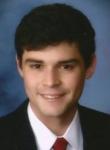Kronenberg, Michael

Michael is in the Gene Regulation home area of the MBIDP. He received a B.A. degree from Boston College in 2016, and then came to UCLA and joined the laboratory of Dr. Michael Carey. He entered the CMB Training Program in 2017.
Mentor: Dr. Michael Carey
Enhancers are regulatory sequences in the genome that integrate transcription factor binding events to recruit coactivators and activate the expression of distal genes. Active enhancers function through their ability to contact distal promoters across 3D space, a phenomenon known as looping. While the importance of transcription factor dependent enhancer activity in cellular differentiation is well documented, the mechanisms which link transcription factor binding with enhancer-promoter loop formation are unclear. As dysregulated transcription factor binding at enhancer elements appears to play a large role in disease, elucidating the downstream consequences of abrogated or ectopic binding events could generate insights into how disease states manifest at the level of transcriptional control.
I am interested in linking the initial transcription factor binding events at enhancers with formation of the enhancer-promoter interface or ‘loop’ in mouse embryonic stem cells (mESCs). mESCs contain a limited transcription factor repertoire and are highly dependent on the coactivator Mediator to maintain pluripotent transcriptional programs. Importantly, Mediator is present at active enhancer-promoter loops in mESCs, and has been shown to correlate with loop formation. My current research objectives are 2-fold. Firstly, I am investigating how Mediator is recruited to enhancers co-regulated by two or more transcription factors. For example, does transcription factor binding have an additive effect on mediator recruitment, or is recruitment under synergistic control? Secondly, I will investigate whether Mediator recruitment directly drives loop formation, and whether other coactivators are involved in establishing the enhancer-promoter interface. To do this, I am integrating genomic platforms such as RNA-seq, ChIP-seq, and 3C with siRNA-based gene knockdown in mESCs. This experimental platform allows for the combined interrogation of binding events at enhancers and subsequent looping phenotypes, while maintaining a cellular pluripotent state. Ultimately, I hope to leverage this workflow to delineate how primary transcription factor binding events mechanistically promote enhancer functionality.


